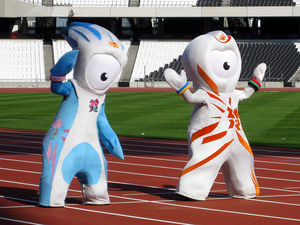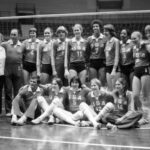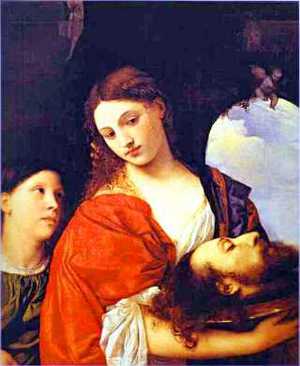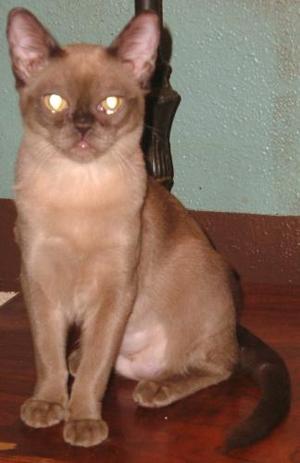Mascots have become synonymous with sports. Who doesn’t love cheering along with the quirky character that is representative of your favorite team? Mascots add a sense of fun and excitement, in addition to being a unifying cultural symbol that fans from all backgrounds can enjoy.
For the upcoming 2012 Olympic Games in London, Britons have chosen Wenlock and Mandeville, one-eyed, futuristic characters that are named after the Wenlock Olympian Society and the Stoke Mandeville games, as their official Olympic mascots.
Ever since the first Olympic mascot was introduced at the 1972 Olympic Games in Munich, mascots have become an integral part of the Olympics.
Here is the history of Olympic mascots and all of the Summer Olympic mascots that fans have enjoyed throughout the years:
Waldi, 1972 Summer Olympic Games, Munich, Germany
Waldi, the colorful dachshund, was the first mascot ever used at the Olympics. The dachshund was chosen as the mascot character because it is a dog of German origin, one that was very popular in Bavaria at the time. The dachshund is a dog that exudes agility, tenacity, and resistance — qualities that the Germans felt were representative of the qualities of Olympic athletes. Waldi’s colors, pastel shades of blue, purple, yellow, green, and orange, were chosen to capture the festive atmosphere of the Olympic Games.
See pictures of all of these mascots here .
Amik, 1976 Summer Olympic Games, Montreal, Canada
Amik, the beaver, was the official mascot of the 1976 Olympics in Canada. The name, Amik, is from the Algonquin language and means “beaver.” Algonquin is the language that was prodominately used by the American Indians in Canada at the time. To the Canadians, beavers represent hard work and dedication, attributes that capture the spirt of Olympian athleticism.
Misha, 1980 Summer Olympic Games, Moscow, Russia
Misha, the adorable and cuddly teddy bear, was used as the mascot of the Summer Olympics in Moscow in 1980. Misha was created by the talented children’s illustrator, Victor Chizikov, and became an international favorite mascot. Who could resist a sweet teddy bear?
Sam, 1984 Summer Olympic Games, Los Angeles, USA
Sam, the bald eagle, was the American mascot of the 1984 Summer Olympics and was designed by the legendary Walt Disney. The eagle, which is America’s national bird, was named after “Uncle Sam,” and wore the colors of the American flag. Sam also initiated the commercial use of Olympic mascots.
Hodori, 1988 Summer Olympic Games, Seoul, Korea
Hodori, the orange tiger created by Kim Hyun, was the official mascot of the 1988 Summer Olympics. Hodori was chosen to represent the oriental culture and exuded the hospitable nature of the Koreans. In addition to wearing a traditional Korean dance hat, Hodori wore a medal of the Olympic rings around his neck.
Cobi, 1992 Summer Olympic Games, Barcelona, Spain
The mascot for the 1992 Olympic Games in Spain was Cobi the dog. Cobi was designed by the artist Javier Mariscal, and in an effort to expound upon the the festive spirit of the Olympics, the Spanish Olympic committee also created a television series of Cobi the dog for children.
Izzy, 1996 Summer Olympic Games, Atlanta, USA
Izzy, the official mascot of the 1996 Olympic Games in Atlanta, Ga., was the first Olympic mascot to be created by a computer. Izzy was designed as an abstract fantasy character, so the name “Izzy” was used to reinforce the curiosity surrounding the mascot because nobody is really sure what Izzy was.
Syd, Olly, and Millie, 2000 Summer Olympic Games, Sydney, Australia
Syd, the platapus, Olly the kookaburra, and Millie the echidna, which are animals native to Australia, were used to represent “earth, air, and water.” The mascot trio was designed by Matthew Hattan, with Syd and Olly personifying the qualities of the Olympics that the Australians wanted to convey — generosity and vigor — while “Millie” was a nod to the new millennium.
Athena and Phevos, 2004 Summer Olympic Games, Athens, Greece
Ahtena and Phevos, the mascots for the 2004 Olympics in Greece, were dolls that were modeled after thousands-of-year-old dolls that were found at an archeological site in Greece. Greek mythology names Athena and Phevos as brother and sister, who were named after the Greek God of light and music, and the Goddess of wisdom, which is the patron of Athens, the host city.
The Five Fuwa Dolls, 2008 Summer Olympic Games, Beijing, China
The five fuwa dolls, which were the mascots of last year’s Olympic Games in Beijing, were created to represent the Olympic torch, as well as four of China’s most popular animals — the fish, the panda, the Tibetan antelope, and the swallow. These dolls were incredibly cute and were loved by Olympic fans from all around the world.
Sources:
mapsofworld.com
china.org
Ruqaiyya Noor is a student English teacher at Marshall University and a featured contributor for education on Yahoo! Voices. Ruqaiyya is an avid fan of the Olympics and can be found glued to the television set for the entirety of the Olympic Games.





